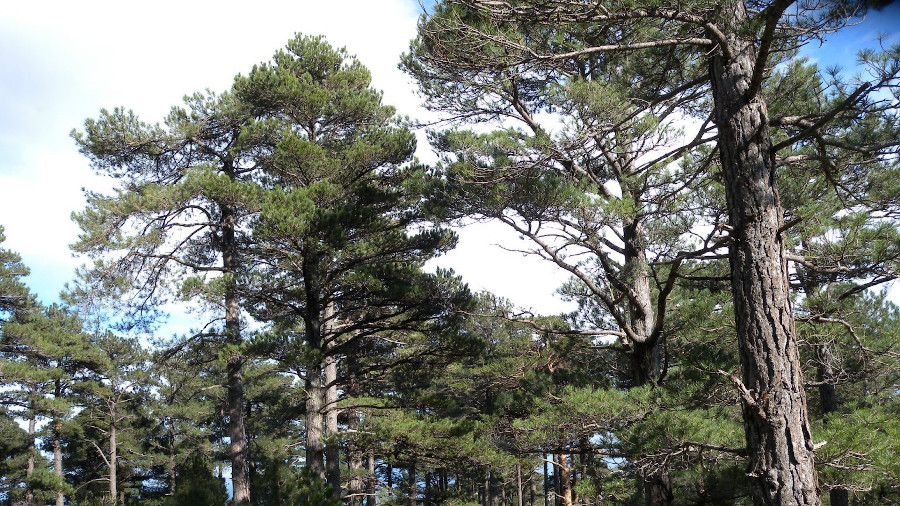A bibliographic review by CREAF and the UAB concludes that the tallest trees are more capable of overcoming droughts, at least in the short term, thanks to a series of adaptations developed as they grow.

The study, led by CREAF postdoctoral researcher Laura Fernández de Uña (Marie Curie grant) and with the participation of CREAF and UAB Department of Animal Biology, Plant Biology and Ecology researchers Jordi Martínez Vilalta and Rafael Poyatos, concludes that as trees grow they make structural and functional readjustments that minimise the formation of embolisms in their circulatory system and the risk of death by starvation, the two most common complications suffered by trees during periods of drought.
Scientific evidence shows that, with height, trees become more efficient in their use of water. For example, in times of drought they are more agile in moving water from the trunk reserves to the circulatory system (known as xylem). Also, the higher they grow, the trunk produces more water-storing tissue and stores more food reserves, and in turn develops deeper roots capable of extracting water from deeper parts of the soil. These adaptations are key to withstanding water shortages, and potentially make them more resistant to drought episodes than shorter trees. "In this study we have not compared differences between taller and shorter species, but have focused on how trees, within each species, adapt their structure and functioning as they gain height and on the potential effect of height on their suffering from drought," says Fernández de Uña, first author of the study.
The review study assessed more than 125 studies (of which more than 90 focused on trees of different heights), mostly in temperate forests due to the lack of data in other types of ecosystems, and more than 25 structural and functional traits.
Death by thirst or starvation
There may be several reasons why tree leaves turn brown or fall during a drought. On the one hand, water may not be reaching higher branches, which can cause hydraulic failure in their circulatory system due to embolisms. These occur when the heat is very strong and the leaves have to evapotranspire a large amount of water from the roots to the leaves, but the soil is dry or there is not enough water. This situation increases the pressure within the circulatory system and embolisms can occur if air enters the ducts, similar to what happens in humans. Embolisms are considered hydraulic failures and can lead to the death of the tree. On the other hand, the tree can suffer from starvation: "heat also starves the tree because, when the temperature rises, the leaves close their stomata so as not to lose water through evapotranspiration, and therefore photosynthesis stops. In fact, just as they accumulate more water, large trees tend to have large carbon reserves in their tissues, which they can use during these periods in which they are not photosynthesising", says Maurizio Mencuccini, co-author of the study and ICREA researcher at CREAF. "The stomata are the holes that leaves have to exchange gases during photosynthesis; if the tree closes the stomata it stops photosynthesis and stops feeding", he concludes.
Giant trees are very important
The tallest trees are key parts of a forest. The provide food, shade and shelther for forest species. They also accumulate large quantities of carbon and are able to redistribute nutrients and modulate much of the forest's water cycle, given that they collect a lot of rainwater through their roots and evapotranspirate it in large amounts. "Increasingly frequent and drastic droughts are a threat to forests, and losing these giant specimens could represent a danger to the proper functioning of the forest", says Jordi Martínez-Vilalta, co-author of the study and researcher at the UAB and CREAF.
Original article:
Fernández de Uña L., Martínez-Vilalta J., Poyatos R., Mencuccini M., McDowell N.G. The role of height-driven constraints and compensations on tree vulnerability to drought. New Phytologist






